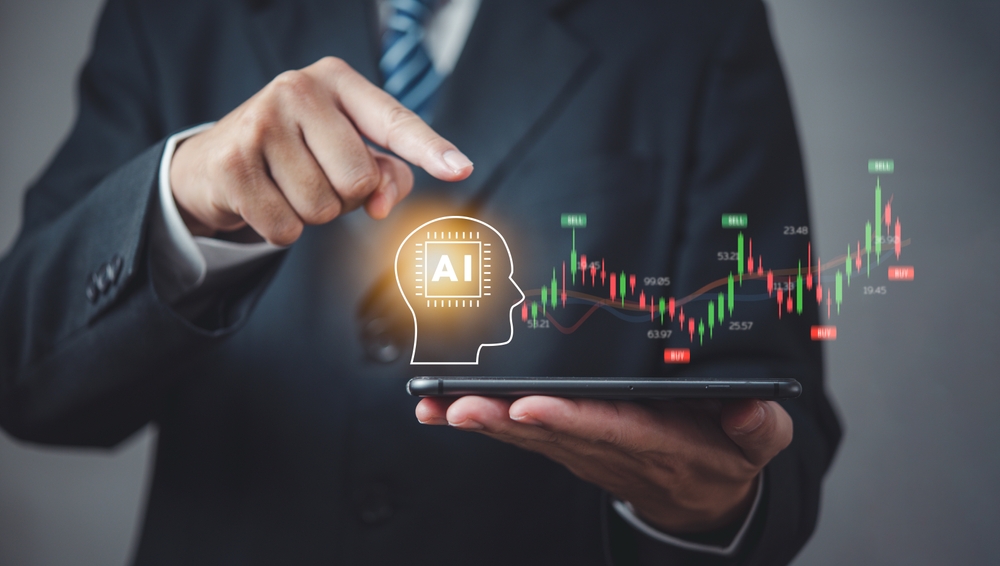Introduction
The pursuit of success in investment strategies in the ever-changing world of finance necessitates an unwavering commitment to staying ahead of the curve. An entirely new era in investment analysis has been brought about by the revolutionary advent of Artificial Intelligence (AI). This technological giant has given investors unmatched insights in addition to introducing tools never seen before. In the investigation that follows, we will peel back the many layers of artificial intelligence’s complex role in contemporary investment analysis and demonstrate how it is revolutionizing the way the financial landscape is shaped. Come along on this exploration of the nexus between innovative technology and astute financial judgment.
1. Data Processing and Analysis
- Effective Data Management: Artificial Intelligence outperforms humans in handling enormous amounts of financial data quickly.
- Pattern Recognition: Within financial statements, market trends, and economic indicators, machine learning algorithms find complex patterns and correlations.
- Enhanced Accuracy: Artificial intelligence (AI) tools reduce human error risk and ensure dependable insights by minimizing data analysis errors.
- Real-time insights: Quick data processing makes real-time analysis possible, allowing investors to decide with knowledge based on the most recent state of the market.
- Data-driven Decision-making: Investment professionals can adopt a more data-driven strategy and increase accuracy and agility in their decision-making processes by using AI to process data.

2. Predictive Analytics
- Historical Data Analysis: Artificial Intelligence employs machine learning algorithms to examine past market data and detect trends and patterns.
- Precise Forecasting: Investors can more accurately predict future movements in the market thanks to predictive analytics.
- Risk Mitigation: Investors can proactively manage risks and modify their strategies by anticipating possible market shifts.
- Market Trend Identification: Artificial intelligence (AI) systems are able to identify new market trends, which gives them a tactical edge in ever-changing financial environments.
- Opportunity Recognition: To obtain a competitive edge in the market, investors can use predictive analytics to spot investment opportunities before traditional analysis makes them obvious.
3. Sentiment Analysis
- Textual Data Processing: AI-driven technologies examine a tonne of textual data from social media and news articles.
- Contextual Understanding: To precisely assess public opinion, machine learning algorithms analyze context and linguistic patterns.
- Real-time insights: Sentiment analysis gives you access to real-time data on how the market is feeling about particular assets or the state of the market as a whole.
- Artificial Intelligence: (AI) measures the emotional tenor of textual data, providing a numerical representation of consumer sentiment.
- Decision Support: By taking into account the overall sentiment of the market to predict future changes in investor behavior, investors use sentiment analysis to make better-informed decisions.
4. Algorithmic Trading
- Automated Execution: In algorithmic trading, pre-established trading strategies are automatically carried out.
- High-Speed Processing: AI-driven algorithms execute trades in a fraction of a second, operating at speeds that are unattainable for human traders.
- Market Analysis: Using preset rules, machine learning algorithms examine market conditions to determine the best times to enter and exit the market.
- Risk management: To effectively manage risk in real-time, algorithms dynamically modify trading parameters.
- Emotion-Free Trading: Algorithmic trading improves objectivity and lessens the influence of human psychology on trading decisions by doing away with emotional biases.
- Efficiency: Algorithmic trading improves overall trading performance by promptly adapting to changes in the market and precisely executing trades.
5. Risk Management
- Data-driven Risk Assessment: To measure and examine possible risks, AI evaluates past data as well as market volatility.
- Dynamic Risk Adjustment: To improve risk management tactics, machine learning models dynamically modify risk parameters in response to current market conditions.
- Event Impact Analysis: AI’s quick assessment of unanticipated events’ effects allows for prompt adjustments to reduce possible losses.
- Portfolio Stress Testing: To assess resilience, sophisticated risk management tools simulate different market conditions and run stress tests on investment portfolios.
- Optimal Decision-Making: AI gives investors the ability to make optimal decisions by supplying thorough risk insights. This allows investors to balance their risk tolerance and potential returns for more effective portfolio management.
6. Portfolio Optimization
- Diversification Analysis: AI evaluates different asset classes and determines the best distributions for diversification.
- Risk-Return Balancing: Through optimizing portfolio composition, machine learning models achieve the targeted risk-return profiles.
- Real-time Adjustments: AI dynamically rebalances portfolios to ensure alignment with investment objectives in response to shifting market conditions.
- Effective Asset Allocation: To allocate assets effectively, sophisticated algorithms take past performance and market trends into account.
- Constant Improvement: AI-powered portfolio optimization entails constant improvement through adaptation to changing market conditions for long-term performance gains. Through addressing these aspects, AI-driven portfolio optimization strengthens investment portfolios’ resilience in a constantly shifting financial environment while also boosting returns.

Conclusion
To sum up, the integration of Artificial Intelligence into investment analysis represents a paradigm shift in the financial industry, giving investors access to previously unheard-of powers. The progression of artificial intelligence (AI) in decision-making can be seen in the move from improved data processing and predictive analytics to sophisticated sentiment analysis, algorithmic trading, and all-encompassing risk management. The growing role of AI promises more advanced tools as technology develops, giving investors a tactical advantage in navigating the intricacies of the financial world. Those who want to compete and succeed in the fast-paced world of finance, where success depends on flexibility, intelligence, and the application of cutting-edge technologies, must embrace these developments.
